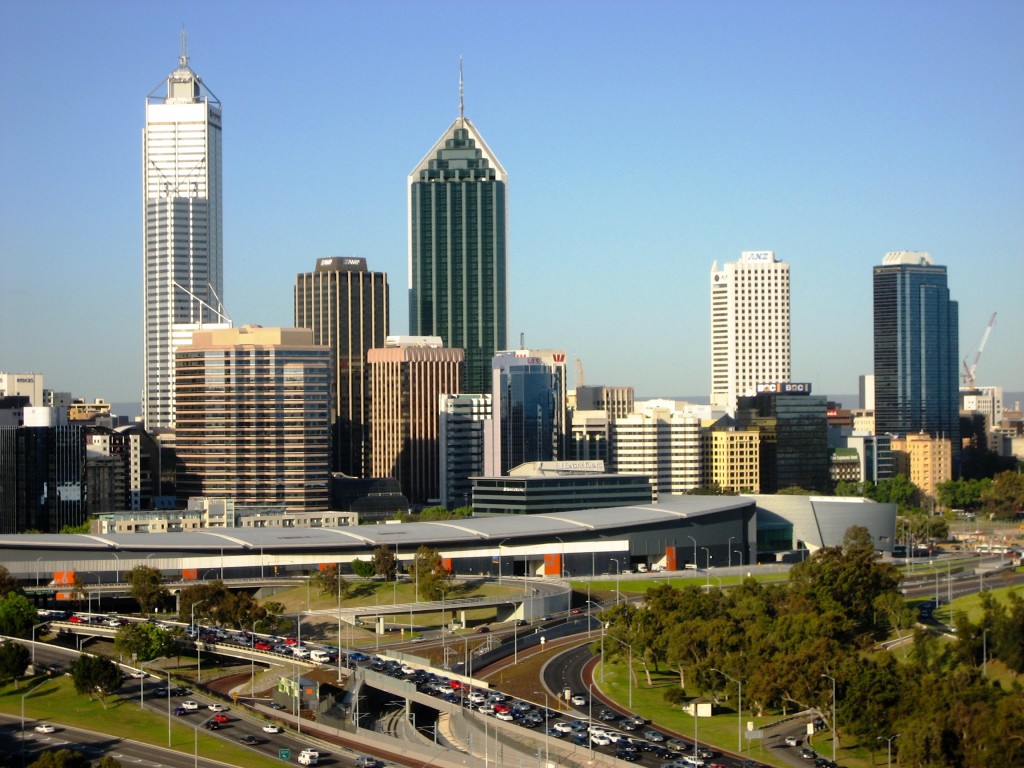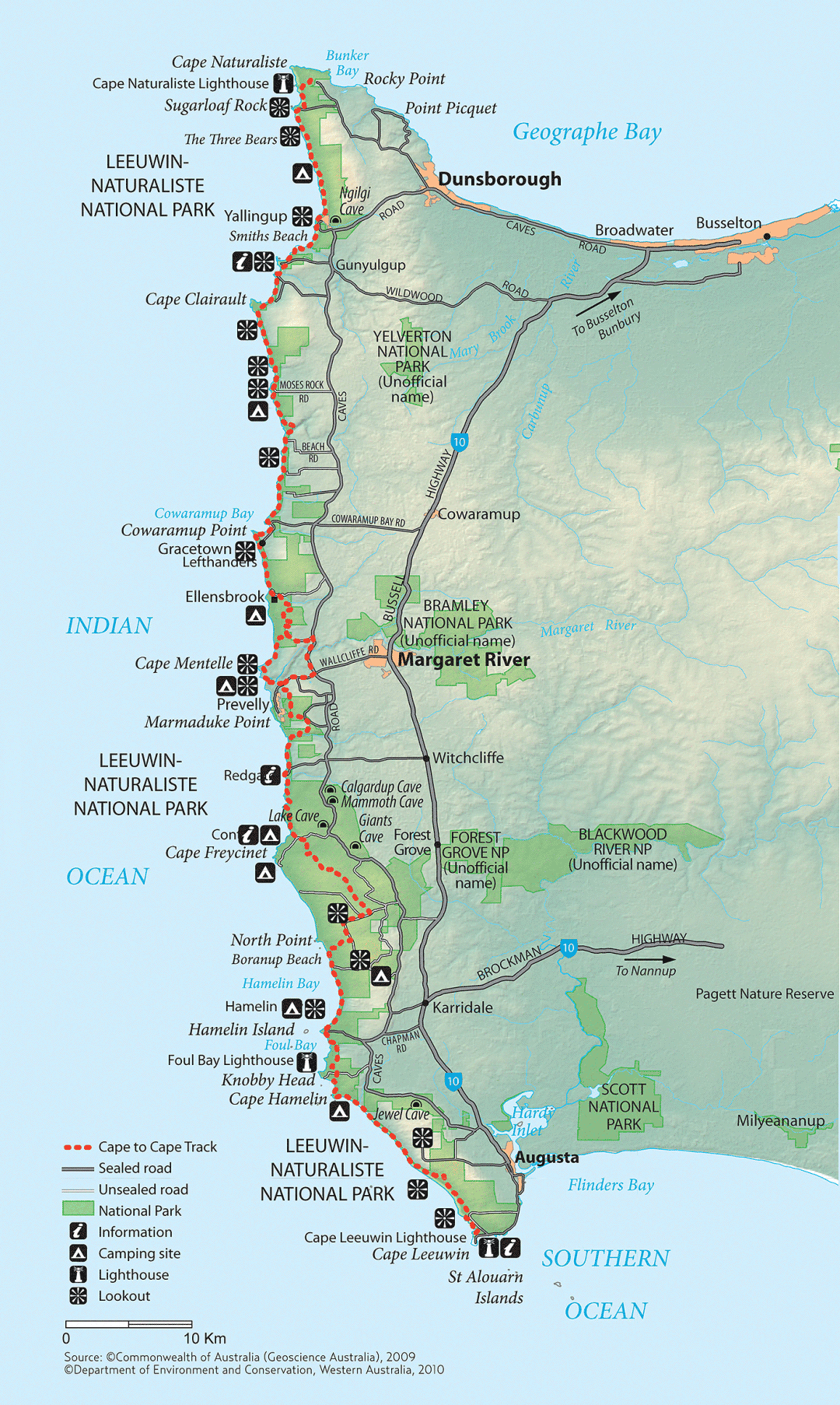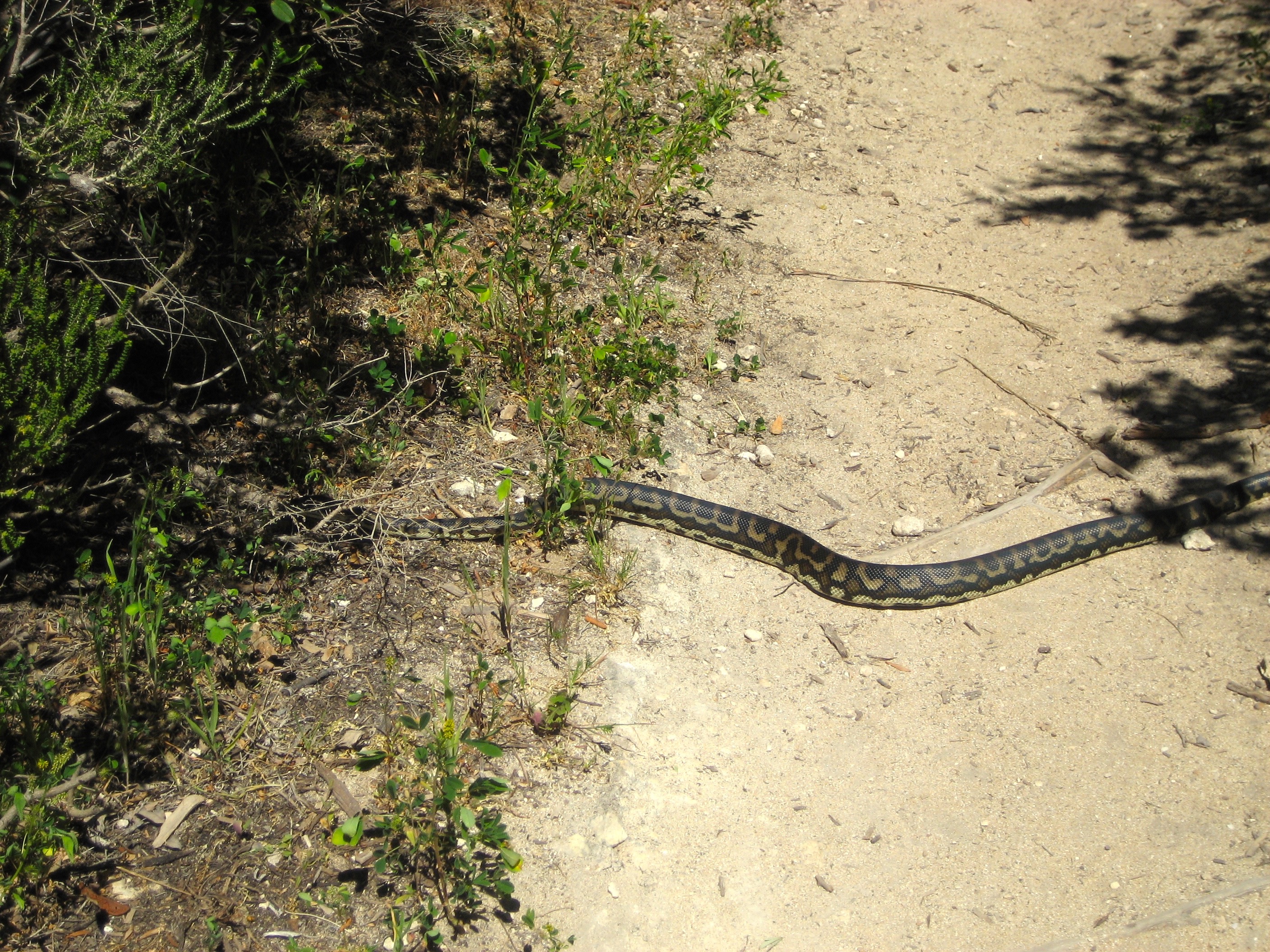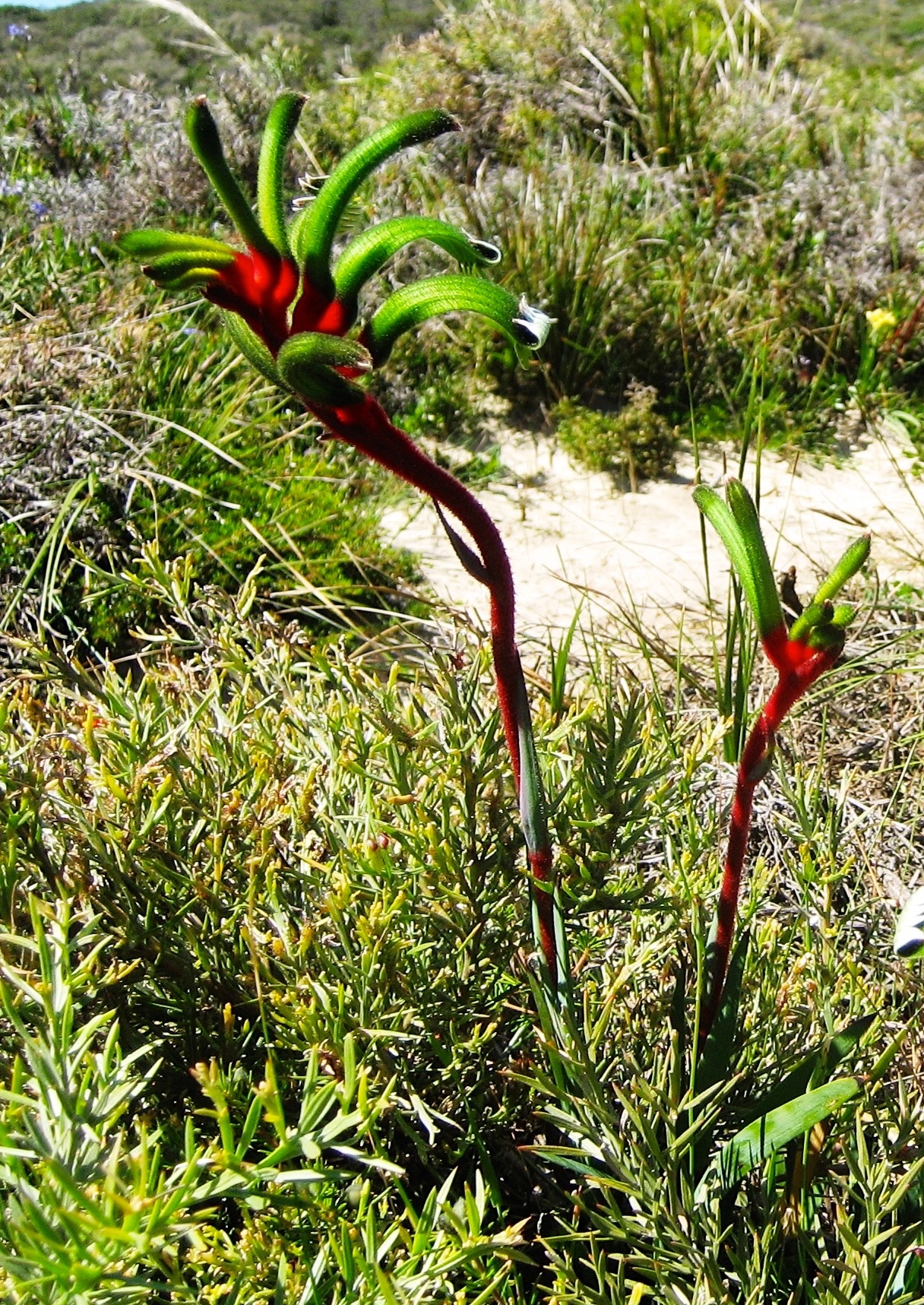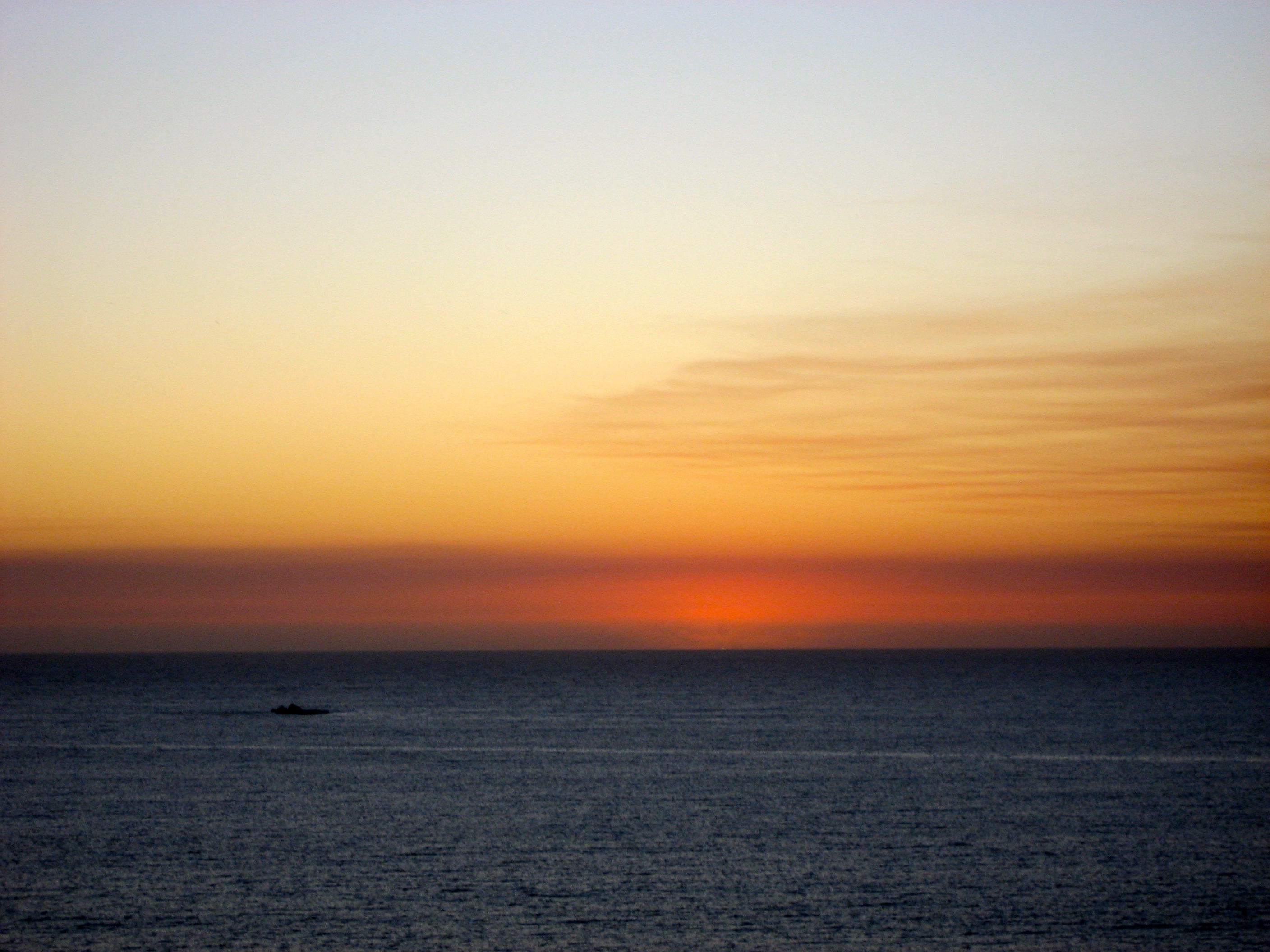These photographs were collected during a return visit in 2007 to my ‘State of Origin’, Western Australia (WA). If you really want to see the vast array of unique flowers in their natural habitat, then spring time from September to early October is the time to visit the WA countryside.
To enjoy a full gallery of these wildflowers in their natural habitat, then click on this panoramic of Perth, Kings Park, Wildflowers, Western Sunsets.
Perth, the home of the Wildflower State
S-W Wildflowers and trees
Otherwise, read on for the story below.
Perth (above) is nestled close to what used to be a swampy bay area of the Swan river. Capital works began a long project in the 60’s filling this area in with tons and tons of sand. The freeways seen in the foreground and the Narrows bridge built across the narrowest part of the Swan river was designed to link the southern suburbs of Perth (below) with a road system that had traffic flyover roads going into the city or coming and going from east, west, north and south of Perth.
The road system served the people of Perth very well for many years but the recent population growth has begun to show some needs for further improvements in this road system.
It’s a clean city with no industry within to soil and contaminate it. Being 5 hours by air flights from Perth, quite a few ‘eastern States’ Australians (or New Zealanders for that matter!) still might not have taken the time to visit it.
To get the best view of Perth, we drove up to Memorial Drive, King’s park (above) to where the War Memorial (below) stands high on the hill here and overlooks the city and east and south from here.
But that’s not all!
Many tourists do not have time to go rural around the State to see all the beautiful flora. For those, King’s Park has some large, walk through gardens that show off all the unique WA flowers and plant life.
I have made King’s Park the start of our car tour planned to go to south-west of WA. It’s a pictorial story of the WA flora found in its natural habitat and accompanying land scape .
Boys, I’m not an expert with these plants and flowers. I’m mainly enthused with the photography. But I will attempt to describe them correctly. Please chip in if I am wrong and give more detail if you know more.
Our BLF forester, Roger Underwood, might be able to help us out with this, especially if I bloop here and there! This tour is through his beloved jarrah and karri forrest country where he spent his working life.
The kangaroo paw flower (seen amongst the flowers below) needs no introduction. They are everywhere in King’s Park and in gardens through the rest of Australia now. But I still marvel at how intricate this flower is and why does it mimic a kangroo’s paw? Is this just accidental or has Mother Nature somehow played a part in designing it?
The Park has some not so well known flowers in all sorts of blazing colours – pink, white, yellow and blue (I think). They are called evelastings, for what turns out to be, an obvious reason.
When you look closely, they appear and feel to have a paper texture. It is illegal to pick these flowers growing in the wild. But, if you could pick a couple, place them between the pages of a thick book and leave them pressed between the pages for some years, you will find when the book is reopened that the flowers still have the same bright colours from when they were first picked in the fields – thus the name, everlastings.
Everlastings can be seen in springtime along the roadways passing through the wheat fields of WA as vast spreads of colour. It’s a spectacular sight to see.
With all the different varieties mixed together in such a colourful display, we left King’s Park wondering whether it would be just as beautiful in the raw countryside.
From Perth, we travelled down the familiar coast highways (shown below) beginning at the historic Fremantle port and going on past Rockingham, Mandurah, Bunbury, Busselton and Pemberton as the first real stop for checking out the bush.
As we approached the heavy forest area of the south-west, there were some beautiful, lush dairy areas we passed through.
There’s no shortage of water here with an average 40 inches (on the old scale) per year. The greatest shame though, is that the magnificent Jarrah- Karri country was in many parts around here cleared for the dairy farms. Returned WWI soldiers were granted small plots by the Government to start up these farms. But eventually, these hard working ‘ex-digger’ dairy farmers had to give in and sell because the farms were too small for them to make a decent income.
Apparently, some of the new tenants were of Italian decent and before long the cows were replaced by grape vines. The famous Margaret River (and surrounding region) wine industry was born to be what it is today.
But thankfully, there are still protected areas where you can see the original lush, running creeks and rivers. There’s plenty of fresh water yabbies there too!
The flowers are appearing but where are the tall trees?



Yes, we found them and this is but a small sample. If you are at all adventurous, then you can climb up the side of the tree on the rather tenuous pegged ladder. After a 60 metre climb (200 feet), you reach a lookout used for sighting any bush fires. On a clear day, you can see from the lookout in the distance the white sand hills of the southern coast.
The photographs here illustrate the size and beautiful red colour of the jarrah wood. You can see here the huge girth of this tree recently cut down. Passers-by had helped themselves to sections of the fallen tree.
But where are all the wild flowers I have been speaking about? Yes they are in this area but much easier to see closer to the coast near Margaret river.
We stayed overnight in the town. It’s small but full of bustle, expensive high class restaurants and of course wine to sample.
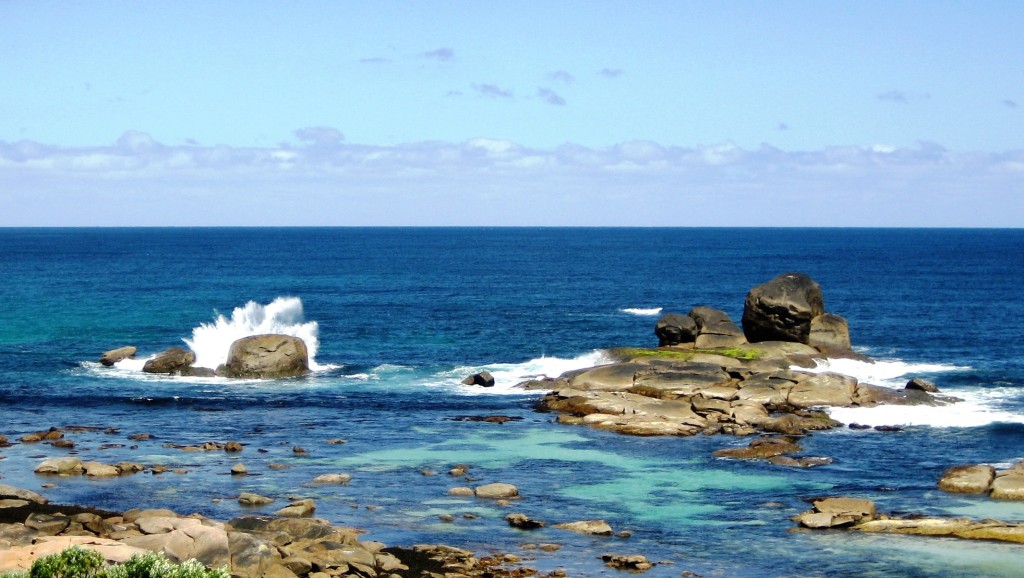
The next morning we drove to where the Margaret river flows to the sea. There are bush walks all along this coastal area with plenty of natural flora to see.

Margaret river is also famous for its big surf not evident on this day. But even so, the spray off the rocks indicates the power of sea.

This is the most western coast of Australia defined by Cape Naturaliste to the north and Cape Leeuwin in the south (see map below).
The coast along here is totally exposed along here to the strong westerly winds, especially the fierce storms that strike during the winter months. Even on days when the sea seems calm, king waves can appear from nowhere and wash unsuspecting fishermen of the rocks.
Despite these conditions, the sandy soil and the limestone beneath, delicate plants and flowers survive very well here. Even the common dandelion, below, displays a pretty little bunch.
There are many orchid species as beautiful as this hidden in the bush. Look closely and you will see another plant with ‘pods’. As a kid, I always regarded it as a weed. We called those pods – ‘blowflies’!


The all-Australian black boy bush fits well amongst the WA wild flowers with some in bloom too.
Snakes alive! It pays to tread carefully in this bush. Move on fella!
The kangaroo paw stands tall in its natural habitat.
We returned to the Margaret river beach as the sun was setting.
And so did other families with their evening meal to enjoy the sunset at the same time.
The sea does not go to sleep though and the birds keep circling looking for their evening meal too. It’s one of my favourite sights.
The sun has almost gone and so has another glorious sunset in the west!
We are left with that eerie red sunset glow feeling contented in seeing the cloudless display before departing back to camp.
Next day, we travelled further north to Yallingup – another popular surf beach (but very treacherous)
with more wild flowers, glorious turquoise seas and spectacular views.
From Yallingup, we travel on to the northern tip at Cape Naturaliste. It has plenty of rough rocky outcrops.
….
….which the fisherman still insist on fishing from, despite the threat of king waves washing them out to sea.
But there’s also an extensive reserve there where the local wildlife enjoy the seaside bush, like this young kangaroo……….. and the beautiful blue wren here. Is it a Fairy Wren? Does anyone know?
As our tour nears an end, we take one last look at the setting sun on the landscape back to Busselton.
Did I tell you? I love WA sunsets!
Goodbye!
Lyn Oliver, 5 March 2015
